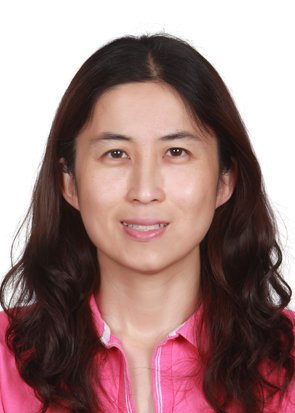Education
1995-1999,B.S., Biochemistry,Jilin University
1999-2005,Ph.D.,Biochemistry and Molecular Biology,Institute of Biophysics, Chinese Academy of Science
2005-2008,Postdoc,Stem Cell Biology and Signal Transduction,The Burnham Institute for Medical Research,
Professional Experience
2008-2013, Research Associate Professor, College of Engineering, Peking University
2013-present, Associate Professor, School of Life Science & BIOPIC, Peking University
Representative Peer-Reviewed Publications
Aaron M. Streets, Xiannian Zhang, Chen Cao, Yuhong Pang, Xinglong Wu, Liang Xiong, Lu Yang, Yusi Fu, Liang Zhao,* Fuchou Tang,* Yanyi Huang.* Microfluidic single-cell whole transcriptome sequencing. PNAS 2014, published online. doi: 10.1073/pnas.1402030111
11. Wentao Li, Tao Chen, Zitian Chen, Peng Fei, Zhilong Yu, Yuhong Pang, Yanyi Huang. Squeeze-chip: A finger controlled microfluidic flow network device and its application to biochemical assays. Lab on a Chip 2012, published online on Feb. 28, 2012. [DOI: 10.1039/C2LC40125H]
10. Chunhong Zheng, Gui’e Chen, Yuhong Pang, Yanyi Huang. An Integrated microfluidic device for long-term culture of isolated single mammalian cells. Science China Chemistry 2012, 55(4), 502-507. (featured as front cover of the issue)
9. Ying Zhou, Yuhong Pang, Yanyi Huang. Openly Accessible Microfluidic Liquid Handlers for Automated High-throughput Nanoliter Cell Culture. Analytical Chemistry 2012, 84(5), 2576-2584.
8. Chunhong Zheng, Liang Zhao, Gui'e Chen, Ying Zhou, Yuhong Pang, Yanyi Huang. Quantitative Study of the Dynamic Tumor-Endothelial Cell Interactions through an Integrated Microfluidic Coculture System. Analytical Chemistry 2012, 84(4), 2088-2093.
7. Jie Shen, Ying Zhou, Tu Lu, Junya Peng, Zhixiang Lin, Lei Huang, Yuhong Pang, Li Yu, Yanyi Huang. Lab on a Chip, 2012, 12(2), 317-324"An Integrated Chip for Immunofluorescence and Its Application to Analyze Lysosomal Storage Disorders".
6, Wu D#, Pang Y#, Ke Y, Yu J, He Z, Tautz L, Mustelin T, Ding S, Huang Z, Feng GS. A Conserved Mechanism for Regulation of Mouse and Human Embryonic Stem Cell differentiation by Shp2 Tyrosine Phosphatase. (# co-1st author) PLoS ONE 4(3):e4914 (2009)
5, Ke Y, Zhang E.E, Hagihara K, Wu D, Pang Y, Klein R, Curran T, Ranscht B, Feng G.S. Deletion of Shp2 in the brain leads to defective proliferation and differentiation in neural stem cells and early postnatal lethality. Mol Cell Biol 27(19):6706-1 (2007)
4, Ke Y, Wu D, Princen F, Nguyen T, Pang Y, Lesperance J, Muller WJ, Oshima RG, Feng G.S. Role of Gab2 in mammary tumorigenesis and Metastasis. Oncogene 26(34):4951-60 (2007)
3, Pang Y, Li X, Qin S, Zhang H and Chen J. Mechanism of Inhibition of Ca2+-transport activity of sarcoplsmic reticulum Ca2+-ATPase by anisodamine. Indian Journal of Biochemistry & Biophysics 43(6):351-359 (2006)
2, Pang Y, Zhu H, Wu P, Chen J. The characterization of plasma membrane Ca2+-ATPase in rich sphingomyelin-cholesterol domains. FEBS Letters 579(11):2397-2403 (2005)
1, Pang YH and Chen JW. Anisodamine Causes the Changes of Structure and Function in the Transmembrane Domain of the Ca2+-ATPase from Sarcoplasmic Reticulum. Biosci. Biotechol. Biochem 68 (1):126-131 (2004)
Laboratory Introduction
